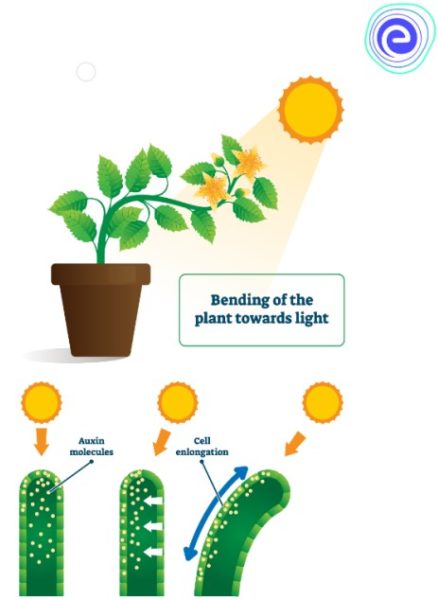Transfer RNA (t-RNA)-
- Transfer RNA (soluble RNA) molecule contains 71-80 nucleotides (mostly 75) with a molecular weight of about 25,000. There are at least 20 species of tRNA corresponding to 20 amino acids present in protein structure. The structure of tRNA (for alanine) was first elucidated by Holley.
- The structure of tRNA depicted in Fig.6.3.2 (c) resembles that of a clover leaf. Transfer RNA molecule consists of a single polynucleotide chain folded to form 5 arms. These five arms are named as acceptor arm, D-arm, anticodon arm, TΨC arm and Variable arm. Transfer RNA contains mainly four arms, each arm with a base paired stem.
- Except acceptor arm, other arms have a stem and loop it means that this arm has two segments one called as stem in which complementary base pairing occurs and another part as a loop in which there is base pairing. As it has already been stated that acceptor arm has only stem and no loop. Beside this variable arm may or may not have a stem.
1. The acceptor arm: This arm is-
- capped with a sequence CCA (5′ to 3′). The amino acid is attached to the acceptor arm.
2. The anticodon arm-
- This arm, with the three specific nucleotide bases (anticodon), is responsible for the recognition of triplet codon of mRNA. The codon and anticodon are complementary to each other.
3. The D arm-
- It is so named due to the presence of dihydrouridine.
4. The TΨC arm-
- This arm contains a sequence of T, pseudouridine (represented by psi, Ψ) and C.
5. The variable arm-
- This arm is the most variable in tRNA. Based on this variability, tRNAs are classified into 2 categories:
(a) Class I tRNAs-
- The most predominant (about 75%) form with 3-5 base pairs length.
(b) Class II tRNAs-
- They contain 13-20 base pair long arm.
Base pairs in tRNA-
- The structure of tRNA is maintained due to the complementary base pairing in the arms. The four arms with their respective base pairs are given below:
1. The acceptor arm – 7 bp
2. The TΨC arm – 5 bp
3. The anticodon arm – 5 bp
4. The D arm – 4 bp
Structure of t-RNA
- Transfer RNA is comparatively smaller RNA molecule made up of 73-93 nucleotides. The nucleotide sequence of t-RNA was given by Holley et al in 1965 for yeast. Transfer RNA molecule is also known as soluble RNA. Synthesis of t-RNA molecule occurs inside nucleus from DNA template strand. However, very small percent of total DNA (about 0.025%) codes for t-RNA. This feature is quite similar to r-RNA because r-RNA is also formed from a small portion of DNA.
- By this we can understand that both t-RNA as well as r-RNA does not show any obvious base relationship to DNA, because both (r-RNA and t-RNA) are formed from small portion of DNA. Contrary to this m-RNA exhibits an expected base relationship with DNA because m-RNA is synthesized from larger portion of DNA.
- The basic function of t-RNA is to carry amino acid to m-RNA during the process of protein synthesis. Each t-RNA carries a specific amino acid (out of a total 20 amino acids).
- Transfer RNA differs from m-RNA and r-RNA as it contains some unusual bases beside the normal bases A, G, C and U. Many of the unusual bases present in m-RNA are formed by methylation of usual bases. For example Methylation of guanine forms methylguanine, Methylation of cytosine forms methylcytosine
- During t-RNA synthesis, first a precursor t-RNA is formed which is processed to form mature t-RNA. Precursor t-RNA contains normal bases and it is when precursor mRNA is modified to mature RNA, some usual bases is also modified to unusual bases.
- Presence of unusual bases is considered important because they protects t-RNA molecule from degradative action of enzymes. Some other unusual bases present in t-RNA are pseudouridine, dihydrouridine, methylinosine, dimethylguanine etc. All the three type of RNA are involved in the process of protein synthesis.
Summary of features of dfferent arms of t-RNA





%5B1%5D.jpeg)



